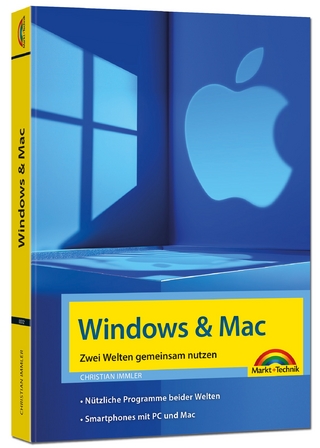
Sequencing Apple's DNA
ISTE Ltd and John Wiley & Sons Inc (Verlag)
978-1-84821-919-9 (ISBN)
The authors call upon Leonardo Da Vinci, the Renaissance genius, who as strange as it seems, shared many traits of personality with that of Steve Jobs, in terms of the ways of performing. Da Vinci helps in understanding Jobs, and hence Apple, with his unique way of designing radically novel concepts, which were actually quite crazy for his time.
In order to shed light on a special creative posture, the indomitable sense of specifying undecidable objects – a hallmark of the late Steve Jobs – is what led the authors to match it with a specific design innovation theory. A real theory, backed by solid mathematical proof, exists and can account for the business virtue of a prolific ability to move into unknown crazy fields! The authors postulate that, by bringing the power of C-K theory to crack open a number of previous observations made about Apple’s methods, it is possible to identify most of the genes of this company.
The authors analyze how and why an Apple way of doing business is radically different from standard business practices and why it is so successful. Genes are a measure of the entity at hand and can encourage past business education routine approaches, then become transferable across the spectrum of the socio-economic world.
Patrick Corsi is an international consultant in designing breakthrough futures based in Brussels, Belgium, and an Associate Practitioner in intensive innovation at the Centre de Gestion Scientifique at Mines ParisTech in France. Previously, he had an extensive career with IBM Corp., IBM France, THOMSON-CSF, the European Commission as well as a successful start-up experience in artificial intelligence. Dominique Morin has worked across private, public as well as semi-public organizations. Throughout his career, he could observe a wide spectrum of mismanagement practices, mostly in the IT domain, while acutely observing Apple’s history. Recently, as a senior engineer in aeronautics for Safran Group in Paris, France, he was involved in critical software development and certification, and airworthiness.
Acknowledgments xi
Preface xiii
Introduction xxvii
Part 1 From Insanely Successful Episodes 1
Chapter 1 Sequencing the First Segments of Apple’s DNA 3
1.1 The gene, domain and cultural bias 3
1.2 Nine DNA segments of rare importance 4
Chapter 2 On Risk Taking 7
2.1 Where is the gap? 7
2.1.1 Business school 7
2.1.2 Apple 8
2.2 Amplifying the gap and progressing 9
2.3 The genes 13
Chapter 3 Product Design 15
3.1 Where is the gap? 15
3.1.1 Business school 15
3.1.2 Apple 16
3.2 Amplifying the gap and progressing 16
3.2.1 On packing with functionality 18
Chapter 4 Market Studies 21
4.1 Where is the gap? 21
4.1.1 Business school 21
4.1.2 Apple 22
4.2 Amplifying the gap and progressing 22
Chapter 5 Giving up Some Fights 25
5.1 The chasm 25
5.1.1 Business school 25
5.1.2 Apple 26
5.2 Amplifying the gap and progressing 26
Chapter 6 Entering New Markets 29
6.1 The chasm 29
6.1.1 Business school 29
6.1.2 Apple 30
6.2 Amplifying the gap and progressing 30
Chapter 7 Apple, the Learning Company 33
7.1 The chasm 33
7.1.1 Business school 34
7.1.2 Apple 34
7.2 Amplifying the gap and progressing 35
Chapter 8 On Research and Development 39
8.1 The chasm 39
8.1.1 Business school 40
8.1.2 Apple 40
8.2 Amplifying the gap and progressing 40
Chapter 9 On Company Acquisition 45
9.1 The chasm 45
9.1.1 Business school 45
9.1.2 Apple 46
9.2 Amplifying the gap 46
9.3 Progressing the gap 52
Chapter 10 The Manager, the Software and the Process 55
10.1 The chasm 55
10.1.1 Business school way 55
10.1.2 Apple’s way 56
10.2 Developing the chasm 56
10.2.1 The case of Mister Hullot 57
10.2.2 Drawing lessons from software management 58
Part 2 Emergence of a Brand: From Failures to Everyday Situations (In Search of Exclusive Value) 61
Chapter 11 Failures Left Behind 63
11.1 Why failures? 63
11.1.1 Business school 63
11.1.2 Apple 63
11.2 Failure dissolves in time 64
11.3 A basket of historical failures 64
Chapter 12 A Cornucopia of Commerce Situations 71
12.1 Commercial policy 71
12.1.1 Business school 71
12.1.2 Apple 71
12.2 Asking customers 71
12.2.1 Business school 71
12.2.2 Apple 72
12.2.3 Development 72
12.3 Forecasting and strategy 73
12.3.1 Business school 73
12.3.2 Apple 73
12.3.3 Development 73
12.4 Grabbing a trend 73
12.4.1 Business school 73
12.4.2 Apple 73
12.4.3 Development 73
12.5 Communicating 74
12.5.1 Business school 74
12.5.2 Apple 74
12.5.3 Development 74
12.6 Getting incomparable value 74
12.6.1 Business school 74
12.6.2 Apple 74
12.6.3 Development 75
12.7 Making something profitable 75
12.7.1 Business school 75
12.7.2 Apple 75
12.7.3 Development 75
12.8 Going after the enterprise market 75
12.8.1 Business school 75
12.8.2 Apple 76
12.8.3 Development 76
12.9 Expenses versus returns 76
12.9.1 Business school 76
12.9.2 Apple 76
12.9.3 Development 76
12.10 Management to commitment to product 77
12.10.1 Business school 77
12.10.2 Apple 77
12.10.3 Development 77
Chapter 13 Emergence of a Brand 79
13.1 The chasm 79
13.1.1 Business school 79
13.1.2 Apple 80
13.2 Amplifying the gap and progressing 81
Part 3 Importing Apple’s Genes into Transferable Knowledge (In Evidence of Deeper Gaps) 83
Chapter 14 On Structure and Contents 85
14.1 The chasm 85
14.1.1 Business school 85
14.1.2 Apple 86
14.2 Developing the chasm 86
Chapter 15 You Said Reality? Which Reality? 89
15.1 The chasm 89
15.1.1 Business school 90
15.1.2 Apple 90
15.2 Developing the chasm 92
15.3 It’s all about perception 95
Chapter 16 Combining the Genes 99
16.1 Taking stock of a flat list of genes 99
16.2 Setting the stage toward a combined dynamics 103
16.2.1 In search for dominant designs 103
16.2.2 Breaking the dominant designs 104
16.2.3 Blueprinting radical “crazy” concepts 105
Chapter 17 Evolving Competition 107
17.1 Cracking open the notion of “competition” 107
17.2 Designing an expanded understanding “competition” 109
Chapter 18 Evolving Innovation 113
18.1 Cracking open the notion of “innovation” 113
18.2 Designing an expanded understanding of “innovation” 112
Chapter 19 A Company Under (Dynamic) Tension 117
19.1 Tension is a co-evolving dynamic 117
19.2 Tension is a dynamic toward futures 119
19.3 Walking the way 120
Chapter 20 Overcoming Common Blocking Points 123
20.1 The need for an innovation molecule 123
20.2 A need to revisit risk-taking 125
Conclusion 129
Appendices 133
Appendix 1 135
Appendix 2 139
Appendix 3 151
Appendix 4 171
Appendix 5 177
Appendix 6 187
Bibliography 191
Index 199
| Erscheinungsdatum | 26.12.2015 |
|---|---|
| Verlagsort | London |
| Sprache | englisch |
| Maße | 165 x 241 mm |
| Gewicht | 508 g |
| Themenwelt | Informatik ► Betriebssysteme / Server ► Macintosh / Mac OS X |
| Mathematik / Informatik ► Informatik ► Theorie / Studium | |
| ISBN-10 | 1-84821-919-9 / 1848219199 |
| ISBN-13 | 978-1-84821-919-9 / 9781848219199 |
| Zustand | Neuware |
| Informationen gemäß Produktsicherheitsverordnung (GPSR) | |
| Haben Sie eine Frage zum Produkt? |
aus dem Bereich


